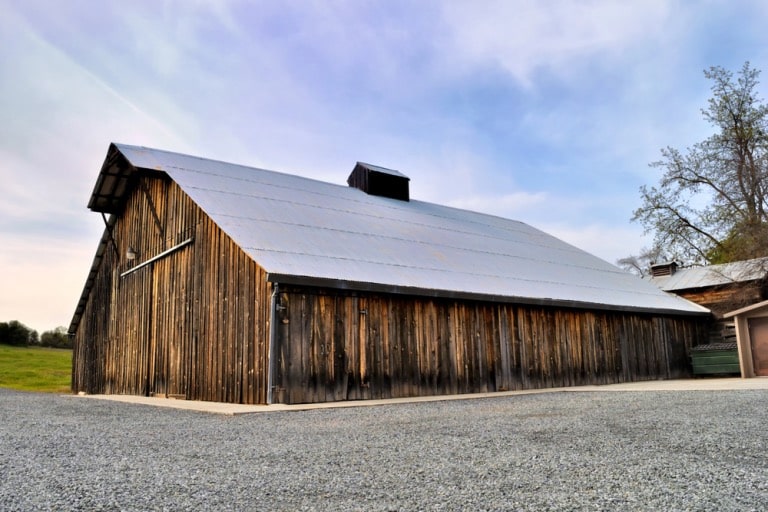Farmers and agricultural operations with barns and stables often do not make the most of what they have. Many design and build these structures and use them year after year without many changes.
To improve barns and stables, let’s explore different layouts, requirements, and affordable options. As these elements come together, they can create the best barn for your needs.
1. Renovate the Entryway
Ensure the entrance to your barn or stable is wide, accommodating, properly lit, and safe.
2. Upgrade Your Driveway
If your driveway has structural weaknesses, broken concrete, or worn elements, it’s a noticeable repair that needs to be made.
3. Fix Leaky Roofing
Roofs wear down over time. No matter how tough or well the material has been installed, every roof will eventually give out. If your barn or stable roof has leaks, have the roofing selectively fixed in those areas or install an entirely new roof.
4. Add Barn Exhaust Fans
A barn exhaust fan controls airflow better. They remove excess moisture, waste gasses, dust, and airborne respiratory disease-causing organisms.
Instantly improve barn air and keep your animals healthy year-round. Having barn fans in your stalls that blow downward across your animals can also prevent pests and flies from landing on them.
5. Design a Communal Barn for Horses
Current research suggests that a community layout is the best type of barn related to horses’ quality of life. With such a shelter, you always want to prevent overcrowding, so the minimum size for a run-in shed or barn building is 12 feet by 36 feet for your average three-horse herd.
6. An Alternative to a Communal Barn
Suppose your barn is not already communal, or you don’t want one. In that case, alternative design modifications might include removing some bars between enclosures, lowering stall walls, or adding windows between stalls to foster animal interaction.
7. Have a Disinfect and Cleaning Schedule
Ensure you routinely clean and disinfect shared areas and equipment, including crossties, pitchforks, hoses, and other supplies. Regular cleaning minimizes disease spread.
8. Keep Waste Shelter Far Away
Waste—manure, used bedding, and old food—should not be stored near the barn. Ensure it’s in a location where runoff will not enter the housing. Cover this waste in a dumpster, bin, concrete pit, or bunker. Remove this waste from the premises every seven days—and not longer.
9. Install an Automatic Waterer
An automatic waterer uses sensor technology, drinking posts, and push-paddle designs to ensure animals have ongoing access to fresh, clean water. This ensures they’re hydrated, which reduces injury risk, increases comfort, and reduces labor costs.
10. Install New Barn Flooring
Most barn floors are concrete slabs or dirt. Still, many options exist for barn flooring, including rubber dog-bone pavers, interlocking mats, porous asphalt, and specific products for barns and stables. What you seek for your floors ultimately depends on your needs, budget, and desired look.
11. Upgrade to Better Barn Lighting
Energy-efficient LED lights provide more visibility at night and significantly reduce energy costs. Unlike other lights that create heat, LEDs contribute next to nothing in temperature. This helps to avoid adding extra heat to the discomfort of the animals inside the barn overnight.
12. Have an Expanded Tack Room
Riders change and prepare for riding in a tack room. It is typically located near the stable or arena; however, sometimes, it’s not. If you want to improve your barns and stables, consider expanding and renovating your tack room to move it to a more optimal location or to make it larger by design.
13. Add an Office Area
Less for livestock and animals and more for the farmer. Adding an office to a barn is a smart investment. It provides a place to do administrative work and paperwork while being close enough to work or animals.
14. Have a Hose Storage Area
Never leave a hose lying on the ground. Instead, wrap and hang it up to prevent disease spread.
15. Minimize Insect Breeding Grounds
Eliminate standing water, fill potholes with gravel, frequently change water buckets and troughs, and keep barns away from ponds, streams, or creeks. If pests are particularly problematic, you may want to install fly screens or mesh on windows and doorways to keep flies out of the barn.
